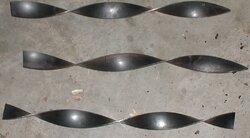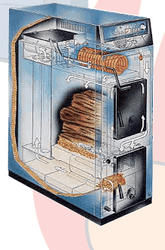My new turbulators came in. I have 6 HX tubes in my EKO 25, each 21" long. I installed a set of six turbulators before last night's fire. It's too early to make a definitive statement about the effects, but the temperature drop between combustion and flue was the highest I've seen - about 110 degrees higher than the previous week's average.
There are a lot of variables, and I haven't had a chance to do a scientific efficiency analysis yet. Still, looks pretty promising based on the one data point.
There are a lot of variables, and I haven't had a chance to do a scientific efficiency analysis yet. Still, looks pretty promising based on the one data point.



